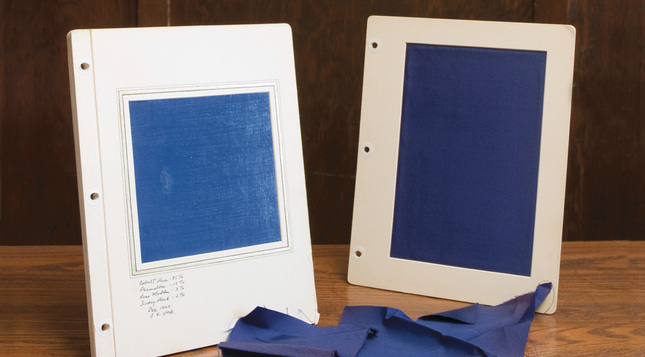
Mark Morosse

Mark Morosse
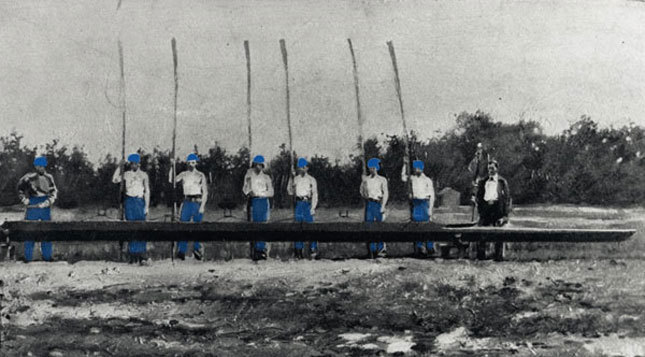
Photograph ©Manuscripts & Archives
Long before 1894, when Yale adopted blue as its official color, the crew rowed in blue pants and bearing blue bandannas. The picture above, The Victorious Crew of 1859, is (sadly) in black and white—no help to historians of the original Yale Blue.
View full image

Photograph ©Manuscripts & Archives
Long before 1894, when Yale adopted blue as its official color, the crew rowed in blue pants and bearing blue bandannas. The picture above, The Victorious Crew of 1859, is (sadly) in black and white—no help to historians of the original Yale Blue.
View full image
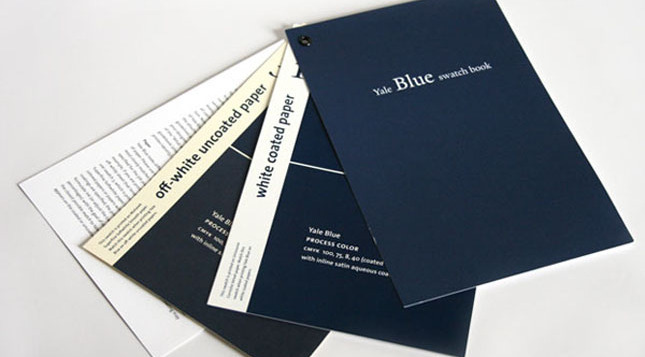
Jacqueline Nelson
These days, Yale officials turn to the university printer’s swatch book instead of the locked-away silk. The book includes sample colors for matching and ink formulas for printing on a variety of papers. If you want to buy a pre-mixed Yale Blue, the swatchbook also provides instructions: order from the Superior Printing Ink Co., formulas 6254 and 6255.
View full image

Jacqueline Nelson
These days, Yale officials turn to the university printer’s swatch book instead of the locked-away silk. The book includes sample colors for matching and ink formulas for printing on a variety of papers. If you want to buy a pre-mixed Yale Blue, the swatchbook also provides instructions: order from the Superior Printing Ink Co., formulas 6254 and 6255.
View full image
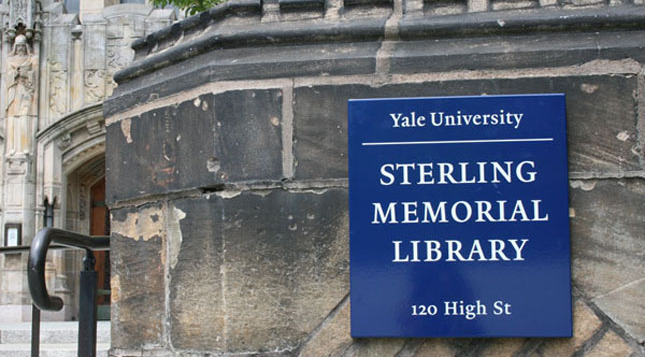
Jacqueline Nelson
Yale has made an exception to the Yale Blue policy for its signs. The color powers that be felt that the official Yale Blue was a bit too dark, and that signs in a brighter color would be more easily spotted
View full image

Jacqueline Nelson
Yale has made an exception to the Yale Blue policy for its signs. The color powers that be felt that the official Yale Blue was a bit too dark, and that signs in a brighter color would be more easily spotted
View full image
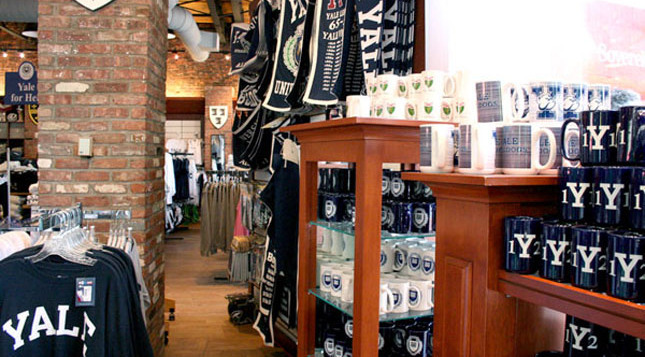
Jacqueline Nelson
Yale has issued guidelines about how to reproduce the Yale Blue, but when it comes to merchandise, most vendors opt for their generic navy.
View full image

Jacqueline Nelson
Yale has issued guidelines about how to reproduce the Yale Blue, but when it comes to merchandise, most vendors opt for their generic navy.
View full image
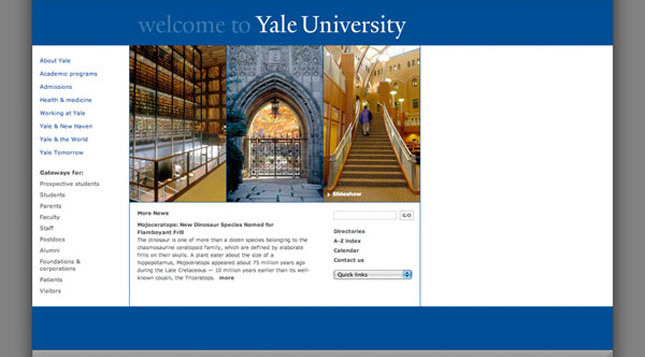
Yale Blue is an ink-dye formula, so university officials had to develop a formula in RGB (that’s a recipe for the percentage of red, blue, and green in a color) for the university’s website. That color, in hexadecimal format, is: hex 0F 4D 92.
View full image

Yale Blue is an ink-dye formula, so university officials had to develop a formula in RGB (that’s a recipe for the percentage of red, blue, and green in a color) for the university’s website. That color, in hexadecimal format, is: hex 0F 4D 92.
View full image
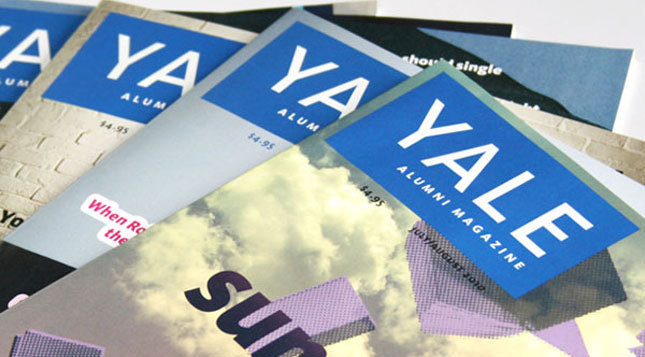
Jacqueline Nelson
As University Printer John Gambell is quick to point out, Yale Blue is not an easy color to print. The university recommends special paper treatment processes to keep the color from going too purple or fading. Here at the Yale Alumni Magazine, we’ve adopted our own blue, a few shades lighter than the official university color. Our blue, selected by the magazine’s designers and editors, is a bit brighter on the page and reproduces more reliably.
View full image

Jacqueline Nelson
As University Printer John Gambell is quick to point out, Yale Blue is not an easy color to print. The university recommends special paper treatment processes to keep the color from going too purple or fading. Here at the Yale Alumni Magazine, we’ve adopted our own blue, a few shades lighter than the official university color. Our blue, selected by the magazine’s designers and editors, is a bit brighter on the page and reproduces more reliably.
View full image
The oldest Old Blues weren’t Blue at all. Green was the official Yale color until 1894, when—following the lead of the Yale crew, which had rowed in blue since the 1850s— the university switched colors.
Two scraps of silk, one framed (right) and one loose, are still preserved in the vault at the university secretary’s office as the first official Yale Blue. Tradition says they came from a bolt of cloth for an academic robe. In 1938, an art professor sought to hedge against their fading by painting a copy of the color (left), but over time, that version degraded faster than the silk.
So when University Printer John Gambell was asked to designate a definitive Yale Blue in 2005, the color choice took some guessing. Tilt the fabric one way and it looks lighter; another, and it looks redder. And then there were the many faux blues in use around the university. The right color, Gambell says, is “dark, but not so dark that you can’t tell it’s blue, and neither green nor purple, though possibly a little grey.”
These days, that tint lives in Gambell’s book of samples, along with directions for reproducing it. You can also order Yale Blue inks, premixed by the Superior Printing Ink Co., formulas 6254 and 6255. They’re less poetic but more reliable than silk.
 loading
loading